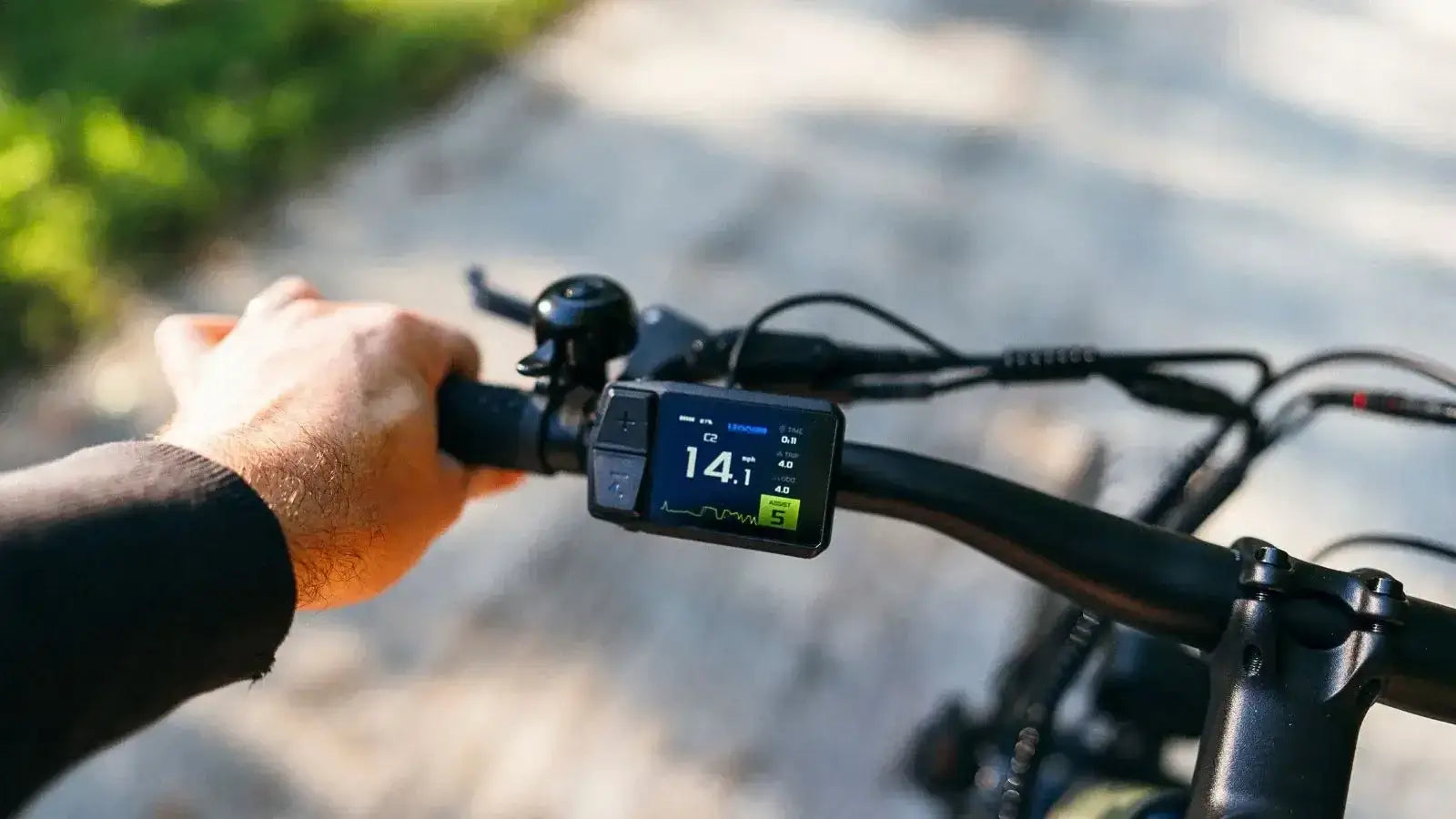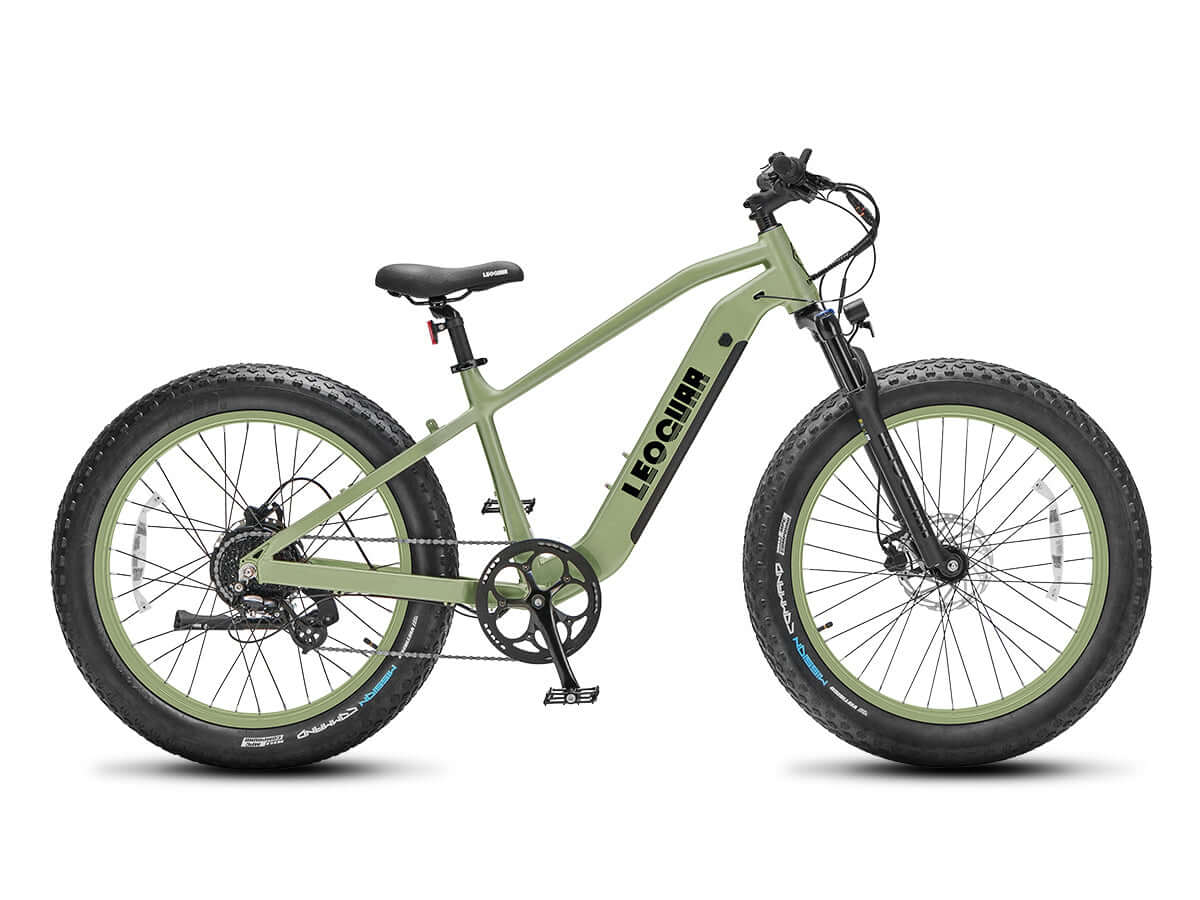
What Is the Range of an Electric Bike? Key Factors
Understanding E-Bike Range
Most electric bikes can go between 20 to 100 miles on one charge. This range varies a lot for good reasons. The actual distance you can travel isn't a fixed number that stays the same every time you ride.
It changes based on how you ride, where you ride, and what type of e-bike you have. Think of it like your phone battery - it lasts longer or shorter depending on what apps you use and how much you're on it. This guide will explain every important factor that affects your e-bike's range.
Our goal is to help you understand these factors, guess how far your bike might go, and learn how to get the most out of every charge. As testing by publications like Bicycling Magazine shows, the market offers many different types of bikes, from lightweight city bikes to long-range touring models.
Battery Capacity is King
The most important thing for e-bike range is the battery's capacity, measured in Watt-hours (Wh). Think of Watt-hours as the size of your e-bike's fuel tank. A bigger number means more energy stored, which means you can go farther.
When you compare different e-bike models, the Wh rating is the best way to guess how far it might go. A basic formula to understand this is: Estimated Range = Battery Capacity (Wh) / Average Consumption (Wh per mile). The battery capacity stays the same, but the "Average Consumption" changes with every ride based on many factors.
Here are some typical battery sizes you'll find:
- Lightweight & Folding E-Bikes: Often have smaller batteries from 250-400Wh, focusing on being light rather than going far.
- Standard Commuter & Hybrid E-Bikes: This is the most common type, usually with batteries from 400Wh to 600Wh, giving a good balance for daily rides and weekend fun.
- Long-Range, Cargo, or E-MTBs: These bikes are built for distance and power, with batteries from 600Wh to over 1000Wh. Some even have two batteries to go well past 100 miles.

Real-World Range Factors
While the battery holds the energy, several key factors decide how quickly that energy gets used. Understanding and managing these factors is the real secret to getting the most from your e-bike's range.
Some factors you can control, while others depend on your environment or the bike itself. Here's a quick look at the most important factors and how much they affect your range.
| Factor | Impact on Range | Controllable by Rider? |
|---|---|---|
| Pedal Assist Level | High | Yes |
| Terrain & Hills | High | Partially (Route Choice) |
| Total Weight | Medium-High | Partially |
| Motor & E-Bike Class | Medium | No (Fixed) |
| Tire Pressure & Type | Medium | Yes |
| Wind & Weather | Medium | No |
| Riding Style | Medium | Yes |
Your Input and Power
This is the number one factor affecting range. E-bikes have multiple levels of help, often called Eco, Tour, or Turbo. Riding in Eco mode uses very little battery power, asking you to do more work while giving a gentle boost.
Riding in Turbo mode gives maximum power for climbing hills or speeding up quickly, but it drains the battery much faster. Using a throttle, which gives power without pedaling, is the fastest way to use up your battery.
Terrain and Hills
Physics can't be avoided. Riding up a steep hill takes much more energy than cruising on flat ground.
Your motor has to work much harder to fight gravity, which drains the battery faster. Stop-and-go riding in a city, with constant speeding up from stops, uses more energy than keeping a steady speed on an open road.
The Total Load
The more weight the motor has to move, the more energy it uses. This total weight includes the bike, the rider, and any stuff you're carrying.
A 200-pound rider will get less range than a 150-pound rider on the same bike under the same conditions. Adding a child seat, groceries, or a heavy backpack will also reduce how far you can go.
Motor and Bike Class
Not all motors work the same way. Mid-drive motors, located at the bike's pedals, are usually more efficient than hub-drive motors because they use the bike's gears.
The motor's power rating (in Watts) also matters. The legally defined e-bike classes in the U.S. and Europe decide how motors work. Class 1 (pedal-help up to 20 mph), Class 2 (throttle-help up to 20 mph), and Class 3 (pedal-help up to 28 mph) all use power differently.
Tire Connection
Your tires are the bike's only connection to the road, and they affect efficiency more than you might think. Under-inflated tires create more surface area and friction, called "rolling resistance," which makes the motor work harder.
Smooth, high-pressure city tires will give much better range than wide, bumpy mountain bike tires on paved roads.
The Elements
Riding into a strong headwind is like riding up a continuous invisible hill. Your motor has to use a lot of energy just to keep your speed.
Temperature also has a big impact. Lithium-ion batteries work best at room temperature. In cold weather (below 40°F), the chemical reactions inside the battery slow down, temporarily reducing its capacity and range by as much as 20-30%.
Your Riding Style
How you pedal matters a lot. A rider who pedals smoothly, sees stops coming, and coasts when possible will go much farther than a rider who speeds up hard and brakes suddenly.
Using the bike's gears well is also important. Shifting to an easier gear on hills reduces strain on your knees and the motor, saving battery life.
A Tale of Two Rides
To see how these factors work together, let's imagine two different riders, Alex and Ben, using the same e-bike: the "Urban Commuter 500," which has a 500Wh battery.
Scenario 1: Alex the Range-Maximizer
Alex is planning a long, easy ride on a sunny Saturday. His goal is to explore a bike path along a river for as long as possible. He weighs 160 lbs and is only carrying a water bottle. Before leaving, he checks his tire pressure to make sure it's right. He starts in Eco mode, the lowest help level.
He pedals at a steady pace and uses the bike's gears to keep his effort smooth, even on small hills. The weather is calm, and the path is almost completely flat. Because he's working hard and using the motor very little, his average energy use is very low.
The Result: By riding efficiently, Alex travels over 60 miles before his battery dies. He got the most range by controlling every factor he could: help level, riding style, tire pressure, and route choice.
Scenario 2: Ben the Power Commuter
Ben is running late for a meeting across town on a cold, windy Monday morning. His route goes through the city, full of hills and traffic lights.
Ben weighs 180 lbs and carries a 20-lb backpack with his laptop and work files, bringing the total weight to 200 lbs. He puts the bike in Turbo mode to speed up as fast as possible from every red light.
He relies heavily on the motor to power up steep city hills and uses the throttle to get quick boosts in traffic. He's riding directly into a strong headwind.
The combination of high help, frequent stops, heavy load, and hilly terrain puts huge demand on the battery.
The Result: Despite having the same 500Wh battery as Alex, Ben gets low-battery warnings after just 22 miles. His choices and riding conditions made him use energy at nearly three times Alex's rate.
Maximizing Your E-Bike's Range
The good news is that you have a lot of control over your e-bike's range. By following a few simple habits, you can consistently get more miles out of every charge.
Use a Lower Assist Level. This is the best way to increase range. Challenge yourself to ride in Eco or a lower setting when possible, saving higher modes for steep hills or when you need quick speed.
Pedal and Shift Gears. Treat your e-bike like a regular bicycle. Use the gears to keep a comfortable, efficient pedaling speed (around 70-90 RPM works well for many people). This reduces strain on the motor and your legs.
Maintain Proper Tire Pressure. Check your tires at least once a week. The recommended pressure is written on the tire's side. Properly inflated tires roll faster and more efficiently.
Go Easy on the Throttle. If your bike has a throttle, think of it as a short-term boost, not your main power source. Every time you use it, you're drawing maximum power from the battery.
Lighten Your Load. Don't carry unnecessary weight. If you commute daily, consider leaving heavy items like a lock or spare clothes at your destination.
Ride Smoothly. Avoid aggressive, jerky movements. See traffic lights coming and slow down by coasting rather than braking hard at the last second. Gradual speeding up uses far less energy than quick starts.
Plan Your Route. If range worries you, try to choose a route that avoids the steepest hills. A slightly longer but flatter route will often use less battery than a short, hilly one.
Practice Good Battery Care. Store and charge your battery at room temperature when possible. For long-term storage, keep the battery at a partial charge (around 40-70%) rather than fully charged or completely empty.
E-Bike Range FAQ
Does range decrease over time?
Yes. Like all lithium-ion batteries, e-bike batteries slowly get worse with use and age. A well-cared-for battery will typically keep over 80% of its original capacity after 500 full charge cycles (roughly 3-5 years of regular use). This means a bike that went 50 miles on a full charge when new might go around 40 miles after several years.
Can I add a second battery?
Yes, many e-bikes are designed to fit a second battery. This is popular for long-distance riders, delivery workers, and cargo bike users who need to guarantee they can cover very long distances. A dual-battery setup effectively doubles your battery capacity and your potential range.
How accurate are display estimates?
The range estimate on your e-bike's display is a changing calculation, not a fixed prediction. It's based on your recent energy use. If you've been riding up a steep hill in Turbo mode, the display will show low remaining range. Once you get to flat ground and switch to Eco mode, that number will increase a lot. Think of it as a real-time guide to how your current riding style affects your battery.
What is a realistic commuter range?
For a typical commuter e-bike with a 500Wh battery, a very realistic real-world range is between 30 and 50 miles. This accounts for average rider weight, some hills, occasional use of higher assist levels, and stop-and-go traffic. Riders who are lighter, stick to flat ground, and use low assist will be at the higher end, while those in hillier areas or who love Turbo mode will be at the lower end.
How does cold weather affect my e-bike's range?
Cold weather can reduce your e-bike's range by 20-30% because lithium-ion batteries don't work as well in low temperatures. The chemical reactions inside the battery slow down when it's cold, temporarily reducing the battery's ability to deliver power. To minimize this effect, store your battery indoors when possible and consider keeping it warm before your ride.








































Leave a comment